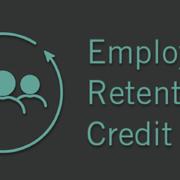The IRS has published new guidance on the Employee Retention Credit (ERC). The credit was created in March 2020 to encourage employers to keep their workforces intact during the COVID-19 pandemic. Notice 2021-49 addresses various issues, particularly those related to the extension of the credit through 2021 by the American Rescue Plan Act (ARPA).
The guidance comes as Congress weighs ending the ERC early to help offset the costs of the pending infrastructure bill. As of now, the credit is worth as much as $28,000 per employee for 2021, or $7,000 per quarter.
ERC essentials
The CARES Act generally made the ERC available to employers whose:
- Operations were fully or partially suspended due to a COVID-19-related government shutdown order, or
- Gross receipts dropped more than 50% compared to the same quarter in the previous year (until gross receipts exceed 80% of gross receipts in the earlier quarter).
The credit originally equaled 50% of “qualified wages” — including health care benefits — up to $10,000 per eligible employee from March 13, 2020, through December 31, 2020. As a result, the maximum benefit for 2020 was $5,000 per employee.
And initially, businesses couldn’t benefit from both the ERC and the popular Paycheck Protection Program (PPP). Most opted for the PPP, which, among other advantages, put money into their pockets more quickly than the credit.
In December 2020, the Consolidated Appropriations Act (CAA) provided that employers that receive PPP loans still qualify for the ERC for qualified wages not paid with forgiven PPP loans. It also extended the credit through June 30, 2021.
In addition, the CAA raised the amount of the credit to 70% of qualified wages, beginning January 1, 2021, and boosted the limit on per-employee qualified wages from $10,000 per year to $10,000 per quarter — so employers could obtain a credit as high as $7,000 per quarter per employee.
The CAA also expanded eligibility by reducing the requisite year-over-year gross receipt reduction from 50% to only 20%. And it increased the threshold for determining whether a business is a “large employer,” and therefore subject to a more stringent standard when computing the qualified wage base, from 100 to 500 employees.
The ARPA extended the ERC through the end of 2021. It also made some changes that apply solely to the third and fourth quarters of 2021.
Guidance on ARPA changes
The majority of the IRS guidance deals with issues raised by the ARPA’s ERC-related provisions, including:
Applicable employment taxes.
Under the CARES Act, employers could claim the ERC only against Social Security taxes. The guidance states that, for the third and fourth quarters of 2021, employers are entitled to claim the credit against their share of Medicare taxes, with the excess refundable.
Maximum amount.
The maximum credit of $7,000 per employee per quarter for the first and second quarters of 2021 continues to apply to the third and fourth quarters. A separate limit applies to so-called “recovery startup businesses,” though.
Recovery startup businesses.
The ARPA expanded the pool of ERC-eligible employers to include those that:
- Began operating after February 15, 2020, and
- Have average annual gross receipts for the three previous tax years of less than or equal to $1 million.
These employers can claim the credit without suspended operations or reduced receipts, up to $50,000 total per quarter for the third and fourth quarters of 2021.
The guidance clarifies that a taxpayer hasn’t begun operating until it has begun functioning as a going concern and performing those activities for which it was organized. It also provides that the determination of whether a taxpayer is a recovery startup business is made separately for each quarter.
Qualified wages.
The ARPA directs extra relief to “severely financially distressed employers” with less than 10% of gross receipts for 2021 when compared to the same calendar quarter in 2019. These businesses may count as qualified wages any wages paid to an employee during any calendar quarter — regardless of employer size.
Note that the ARPA prohibits “double dipping.” Wages taken into account for several business tax credits (for example, the research, empowerment zone and work opportunity tax credits, as well as credits for COVID-related paid sick and family leave) can’t also be taken into account for purposes of the ERC.
Interplay with shuttered venue and restaurant revitalization grants.
According to the guidance, recipients of a Shuttered Venue Operator Grant or a Restaurant Revitalization Fund grant may not treat any amounts reported or otherwise taken into account as payroll costs for those programs as qualified wages for ERC purposes. Such employers must retain documentation that supports the ERCs they claim.
Miscellaneous issues
The guidance addresses several other lingering issues related to the ERC for 2020 and 2021. For example, it clarifies the definition of a “full-time employee.”
The notice explains that employers needn’t include full-time equivalents when calculating the average number of full-time employees for purposes of determining whether an employer is a large or small eligible employer. But, for purposes of identifying qualifying wages, an employee’s status is irrelevant, so wages paid to non-full-time workers may be treated as qualified wages (assuming all other applicable requirements are met).
The guidance also sheds further light on the:
- Treatment of tips and the Section 45B credit,
- Timing of qualified wage deduction disallowance,
- Alternative quarter election for 2021,
- Gross receipts safe harbor, and
- Exclusion of wages paid to the majority owners of corporations.
The rules regarding the last item above, which attribute ownership to owners’ family members, could significantly reduce the amount of the ERC for family-owned corporations. A footnote in the guidance indicates that even the wages paid to minority owners might end up excluded from the ERC computation.
ERC’s future is uncertain
The U.S. Senate has passed infrastructure legislation that would eliminate the ERC for the fourth quarter of 2021. However, the House of Representatives is on recess until the fall, so the fate of the credit remains uncertain.
As always, please do not hesitate to call our offices for additional information regarding the latest ERC guidance and to speak to your representative about how this could affect your situation.
© 2021












